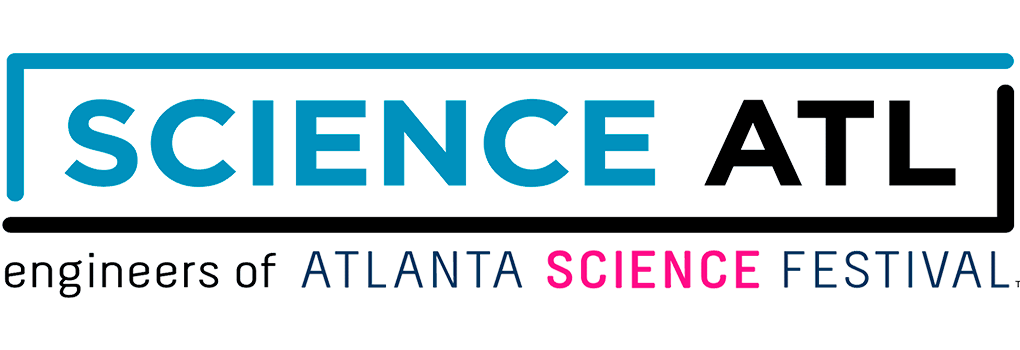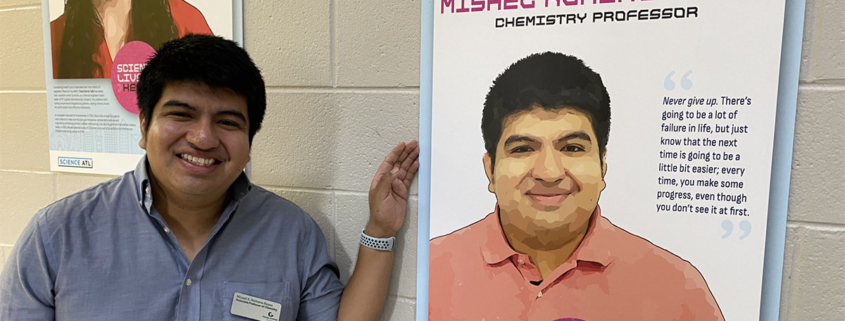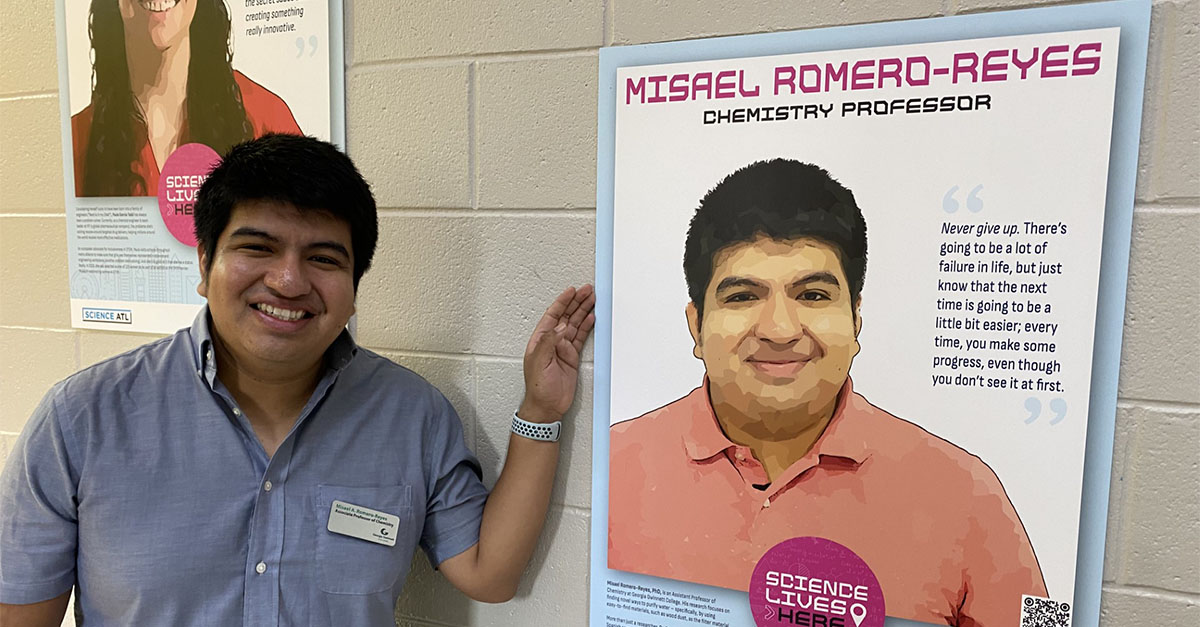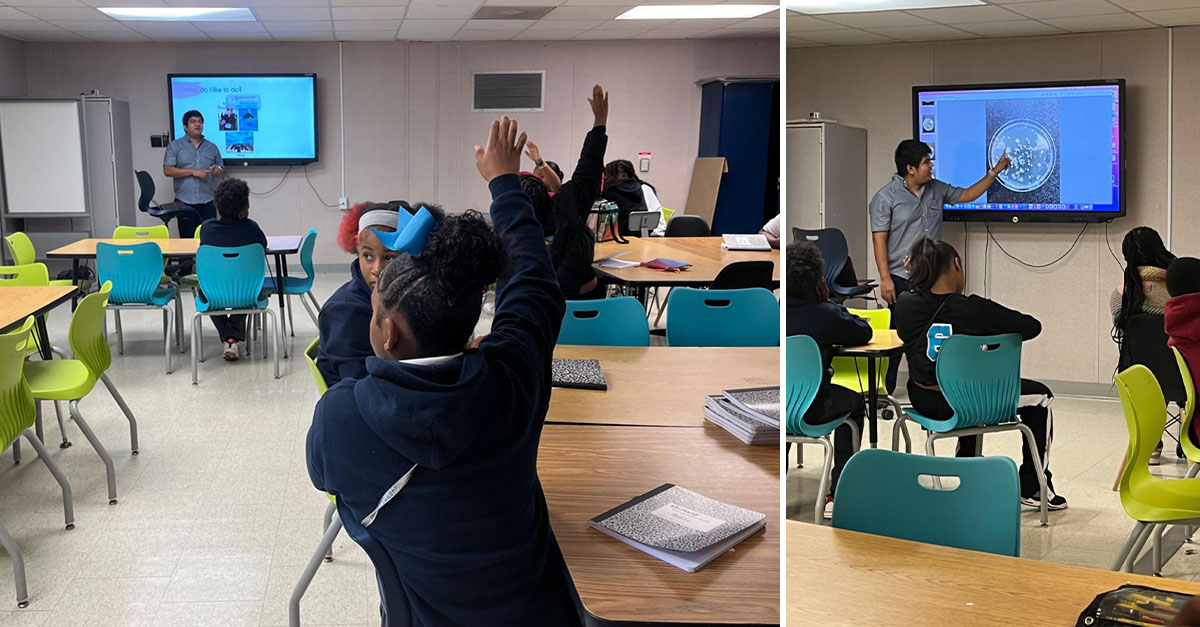Dr. Romero-Reyes Visits Centennial Academy 7th Graders with Science Lives Here!
Georgia Gwinnett College chemistry professor, Dr. Romero-Reyes, visited Centennial Academy and presented to a 7th grade class on his journey as a scientist as part of Science ATL’s Science Lives Here! Program.
When Did You Know You Wanted to Be a Scientist?
For Dr. Misael Romero-Reyes, it wasn’t until high school. His science class was doing experiments with titrations, a colorful technique used to determine the concentration of an unknown solution. The color of the solution would change as the concentration of the solution changed. For the first time, he wanted to understand the chemistry behind his observations. He wanted to be a chemist.
On October 27, 2023, Dr. Romero-Reyes visited Centennial Academy as part of Science ATL’s Science Lives Here! program. The goal of the program is to promote hometown pride in Atlanta as a Science City and cultivate a sense of belonging in science for underrepresented students through pop up exhibits and school visits by STEM professionals.
Dr. Romero-Reyes met with a 7th grade classroom and gave the students a presentation about his journey in science. He was born in Tolúca, Mexico, but moved to Iowa City for three years when his father was on a sabbatical. He described being nervous when he first came to the United States, explaining how “English is different outside of the classroom.” It was at Iowa City West High School where he first discovered his passion for chemistry. He returned to Mexico to attend the Universidad Autónoma del Estado de México, where he received his bachelor’s degree, and then conducted research and obtained his doctoral degree at the University of Iowa and Emory University.
“It’s a lot!” Dr. Romero-Reyes admitted to the students, who were shocked to see so many different places pinned on the map in his presentation. He may not have discovered his passion until later in his youth, but he was determined to follow it once he did.
Now, Dr. Romero-Reyes is an Assistant Professor of Chemistry at Georgia Gwinnett College. He spends half of his time teaching chemistry courses to undergraduate students. The other half of his time is spent doing research in the Romero-Reyes Laboratory, where he is the principal investigator. Currently, his research is focused on filtering harmful bacteria out of water with wood.
“Has anyone ever seen SpongeBob?” Dr. Romero-Reyes asked the class. Nearly every student’s hand shot up. “Me too. Have you ever watched him catch jellyfish?” He proceeded to use SpongeBob’s jellyfish net to describe his wood filtration system. The jellyfish net is too uniform and has too many large holes, so smaller filters are needed to compensate. Similarly, his lab work involves attaching small filters to the pores in wood in order to make it a viable bacteria filtration system.
Dr. Romero-Reyes provided plenty of time for questions and the students had more than enough. They asked him a range of questions from “what are some harmful bacteria in drinking water?” to “what’s your favorite thing you’ve seen under a microscope?” to “what was school in Mexico like?”. He shared photos of bacteria under a microscope, bacteria growing on a plate, and colorful reactions. “Chemistry is the most beautiful thing!” He told the class.
Over 90% of students at Centennial Academy identify as a person of color [1]. One of these students is London, a 7th grader who dreams of developing her own hair product line or becoming a pediatrician. These interests may seem extremely different from one another, but London isn’t worried. When asked about her biggest takeaway from Dr. Romero-Reyes’ presentation, she shared that “you can not know what you’re going to be [now] but you’ll develop it further on”. The opportunity to learn from Dr. Romero-Reyes’ diverse journey as a person of color in STEM was an invaluable experience for students like London.
As part of being involved in Science ATL’s Science Lives Here! program, Centennial Academy received a cash award of $500. They will use this to fund STEM initiatives at their school.
Throughout his presentation, Dr. Romero-Reyes continually emphasized the importance of keeping an open mind and being willing to try new things. For teenage Dr. Romero-Reyes, it meant being open to exploring the colorful chemistry behind titrations. For adult Dr. Romero-Reyes, it means taking additional classes to learn how to teach science courses to bilingual college students, which is something that he hopes to introduce to students at Georgia Gwinnett College soon. “Even if you don’t know what you want to do now, that’s okay.” He advised. “Always keep yourself open to possibilities.”






